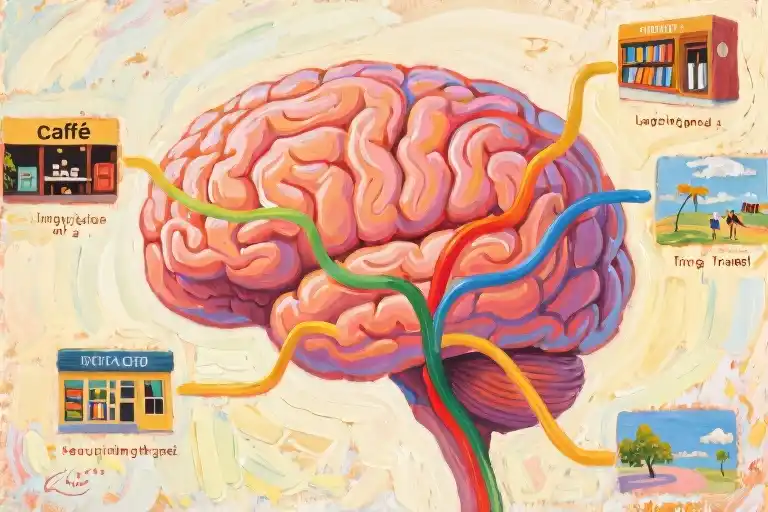The boxes were finally unpacked, posters carefully taped to the cinderblock walls, and every surface in my daughter’s new dorm room had been scrubbed to a respectable shine. My husband and I exchanged one last embrace with our firstborn before joining the stream of other parents heading toward the campus auditorium for orientation.
We settled into the stiff auditorium seats, surrounded by hundreds of other parents navigating this same transition. The speakers came and went—some offering practical advice about campus resources, others sharing reassuring statistics about student success rates. Then one administrator took the podium and offered a piece of advice that made my breath catch in my throat.
“If your student isn’t taking advantage of the academic advising center,” she said with a cheerful smile, “you can guilt them into it. Just tell them: ‘I am paying for these services! You need to use them. Otherwise you’re wasting my money.’ Try it! It works.”
My husband’s hand found mine, our shared discomfort passing between us in that silent language married couples develop over years. A few parents chuckled around us. Many seemed unfazed, perhaps too exhausted from the day’s moving activities to fully process what had just been suggested. But to us, the recommendation felt like a discordant note in what had otherwise been a symphony of thoughtful guidance about respecting our children’s growing autonomy.
Throughout the orientation, every speaker had carefully avoided referring to our college students as “kids” or “children.” They consistently used “your student” or occasionally “your son or daughter,” clearly making an effort to acknowledge the adulthood of the young people we had just helped move into their dorm rooms. This deliberate language choice suggested an understanding that our relationships with our children were entering new territory, one that required renegotiation of boundaries and expectations.
Which made the guilt-tripping suggestion all the more perplexing. Why carefully cultivate an atmosphere of respect for students’ autonomy while simultaneously encouraging parents to manipulate them through emotional pressure? The contradiction hung in the air, unanswered.
I thought about my daughter, who had worked tirelessly to earn the scholarship that covered her tuition, who had secured a job as a campus lifeguard to help with remaining expenses. The pride I felt in her accomplishments wasn’t about the financial relief—though that was welcome—but about watching her take ownership of her education and future. The idea of undermining that developing autonomy with guilt-based manipulation felt fundamentally wrong, like trying to force a plant to grow faster by pulling on its leaves.
The administrator who offered this advice seemed genuinely caring and well-intentioned, which somehow made the recommendation more troubling than if it had come from a clearly authoritarian figure. It suggested that this approach had become normalized, perhaps even institutionalized, as an acceptable parenting strategy during the college years.
As the orientation continued, other speakers emphasized the privacy protections in place for students—how we parents couldn’t access grades or health information without explicit permission from our children. They acknowledged the strange limbo of continuing financial responsibility while respecting increasing independence. There was recognition of the tension inherent in this arrangement, but no further discussion of healthy ways to navigate it beyond that initial, troubling suggestion.
My mind kept returning to the many times I’ve witnessed guilt used as a motivational tool in various relationships—how it creates compliance but rarely genuine commitment, how it breeds resentment even while producing the desired short-term behavior. I thought about all the psychological research suggesting that internal motivation far outperforms external pressure in creating lasting change. And I wondered how many parents in that auditorium would go home and actually use this advice, potentially damaging their relationships with their children because an authority figure told them it “works.”
The car ride home was filled with conversation about this moment, about how we wanted to approach these college years with our daughter, about the type of relationship we hoped to maintain as she increasingly became her own person. We acknowledged that there would be times we’d worry about her choices, moments we might question whether she was making the most of her opportunities. But manipulating her through guilt? That felt like building the foundation of our future relationship on quicksand.
There’s something particularly jarring about receiving bad parenting advice at the very moment you’re trying to learn how to parent better. It’s like asking for directions and being told to drive toward a cliff because “everyone does it.” That orientation session ended with cookies and lemonade on the lawn, but the taste of that single piece of advice lingered long after the sweet refreshments were gone.
The Contradiction of Respectful Language and Manipulative Advice
Throughout the parent orientation, I noticed something subtle yet significant in how the university administrators addressed us. They carefully avoided terms like “your kids” or “your children,” consistently opting for “your students” or occasionally “your sons and daughters.” This linguistic choice felt intentional, a deliberate acknowledgment that the young adults we’d just helped move into dorm rooms were now independent individuals making their own decisions. The language conveyed respect for their autonomy and recognition of their emerging adulthood.
This made the subsequent advice about guilt-tripping all the more jarring. How could the same institution that so carefully crafted language to honor students’ independence simultaneously encourage parents to manipulate them emotionally? The dissonance was palpable. While verbally acknowledging our children’s adulthood, the administrator was essentially recommending we treat them as children who couldn’t be trusted to make responsible choices on their own.
The suggestion to use financial leverage as a guilt weapon felt particularly contradictory. Universities increasingly emphasize student autonomy in academic decisions, healthcare choices, and personal development. Many schools have strict privacy policies preventing parents from accessing grades or health information without student consent. This creates an interesting paradox: institutions grant students privacy and self-determination in some areas while apparently expecting parents to maintain financial control and use it as manipulation leverage in others.
Perhaps this contradiction stems from the transitional nature of the college years themselves. Students exist in that ambiguous space between dependence and independence, still financially supported by parents while making their own daily decisions. The administrator might have been responding to this tension by offering what she perceived as a practical solution. But practical doesn’t mean ethical or effective in the long term.
What troubled me most was how casually the recommendation was delivered. The administrator presented guilt as a standard parenting tool, something normal and acceptable. Her tone suggested this approach was commonplace, even wise. Yet everything else about the orientation emphasized respect, boundaries, and treating students as capable adults.
This contradiction reflects a broader tension in modern parenting. We want to raise independent, critical thinkers, yet we often struggle to relinquish control. We use language that suggests respect while sometimes employing tactics that undermine it. The gap between what we say we value and how we actually behave can be wide indeed.
The university’s careful language choices show they understand the importance of framing. How we talk about our children—or students—shapes how we think about them and treat them. Using “your student” instead of “your child” subtly reinforces their identity as capable learners responsible for their education. But then recommending guilt manipulation undermines this very framing, suggesting they’re not actually capable or responsible enough to make good choices without emotional pressure.
This mixed messaging does everyone a disservice. It confuses parents about appropriate boundaries and communication strategies. It potentially damages parent-student relationships by encouraging manipulation. And it ultimately disrespects students by sending the message that while we’ll use adult language to describe them, we don’t actually trust them to behave as adults.
Healthy relationships require consistency between our words and our actions, between the respect we claim to have and the behavior we demonstrate. When there’s a gap between them, trust erodes. Students who detect this inconsistency might become less likely to seek guidance voluntarily, creating the very problem the guilt tactic was meant to solve.
The solution isn’t to abandon guidance or boundaries, but to align our methods with our stated values of respect and autonomy. If we believe our students are capable adults, we should communicate with them as such—even when it’s more challenging than resorting to emotional manipulation.
The Psychology of Guilt: Healthy vs. Harmful
That administrator’s casual recommendation to weaponize guilt stuck with me long after we left the orientation. It felt wrong intuitively, but I needed to understand why. What I discovered through reading and reflection is that guilt isn’t inherently bad—it’s how we use it that matters.
Adaptive guilt serves as our internal moral compass. It’s that natural, uncomfortable feeling that arises when we’ve genuinely done something that conflicts with our values. When my daughter was younger and accidentally broke a neighbor’s window, the guilt she felt wasn’t something I needed to manufacture—it emerged naturally from her understanding that she’d caused harm. That type of guilt motivates authentic change. It prompts apologies, reparations, and most importantly, genuine learning about how our actions affect others. This is the guilt we want our children to develop—the kind that helps them become ethical, considerate people who can self-correct when they veer off course.
Maladaptive guilt is something entirely different. This is the manufactured variety—the guilt imposed from outside to manipulate behavior. When that administrator suggested telling students they’re “wasting my money” by not using campus resources, she was advocating for exactly this toxic approach. Maladaptive guilt doesn’t arise from any real moral transgression. Instead, it’s imposed to make someone feel responsible for another person’s emotions or expectations. It creates obligation where none naturally exists, and it damages relationships in the process.
The psychological mechanism behind guilt manipulation is both simple and insidious. Parents (or anyone using this tactic) essentially trigger what psychologists call “empathic distress”—the uncomfortable feeling we get when we believe we’ve disappointed someone we care about. Children naturally want to please their parents, and manipulators exploit this desire. The short-term effectiveness is what makes it so tempting: when you make someone feel guilty, they often comply quickly to relieve that discomfort.
But this immediate compliance comes at a significant cost. The person on the receiving end learns to associate their relationship with negative emotions. They might still do what you ask, but they’ll increasingly resent both the request and the requester. The behavior change isn’t driven by genuine understanding or internal values—it’s purely avoidance of emotional discomfort. That’s why choices made under guilt manipulation rarely last once the pressure diminishes.
I’ve come to recognize that many people who use guilt as a strategy don’t realize they’re causing harm. They often learned this approach from their own upbringing and simply repeat the pattern. They might see it as “gentler” than outright punishment—a way to get compliance without confrontation. What they miss is how this subtle manipulation erodes trust and authenticity in relationships over time.
The distinction between these two types of guilt matters profoundly in parenting. Adaptive guilt helps build character; maladaptive guilt builds resentment. One fosters genuine moral development; the other teaches children that love comes with strings attached. As parents navigating the college years—when our children are forming their adult identities—understanding this difference becomes especially crucial. We’re not just managing behavior; we’re helping shape how they’ll approach relationships for years to come.
The Hidden Costs of Guilt-Tripping
Guilt might seem like a quick fix, a way to nudge our children toward what we perceive as better choices. But this seemingly harmless tactic carries profound consequences that ripple through relationships and psyches in ways we often fail to anticipate. The administrator’s casual suggestion to weaponize financial support reveals a fundamental misunderstanding of how guilt actually operates in human relationships.
When we use guilt as a tool, we’re not just asking for changed behavior—we’re fundamentally altering the emotional landscape of our relationships. The immediate compliance we might witness often masks a deeper erosion of trust. My husband and I have seen this pattern in families we know: the child who calls home less frequently, the conversations that grow increasingly superficial, the unspoken tension that replaces easy laughter. These aren’t mere relationship bumps; they’re symptoms of a connection being slowly hollowed out from within.
The psychological impact extends far beyond simple resentment. Regular exposure to guilt-based manipulation can trigger genuine anxiety disorders. I’ve watched bright, capable students become paralyzed by decision-making, constantly second-guessing themselves for fear of disappointing their parents. Some develop what psychologists call “anticipatory anxiety”—they’re not just worried about making mistakes, but about the emotional fallout those mistakes might trigger in their parents. This constant vigilance is exhausting and ultimately corrosive to self-esteem.
Perhaps most insidiously, guilt-driven compliance creates the illusion of change without its substance. When a student visits the advising center because they fear parental disapproval rather than because they genuinely want guidance, the interaction becomes transactional rather than transformative. They might go through the motions, but the internal motivation—the crucial element that sustains meaningful change—remains absent. This is why guilt-based behavior modifications so rarely last: they’re built on external pressure rather than internal conviction.
What begins as occasional guilt-tripping can gradually morph into a distorted power dynamic that resembles emotional blackmail. I’ve observed families where every parental request comes with an unspoken “after all I’ve done for you” subtext. The relationship becomes a ledger of debts and obligations rather than a source of mutual support. Children in these dynamics often report feeling like they’re constantly repaying an unpayable debt, creating a pervasive sense of inadequacy that can persist into adulthood.
The particular tragedy of guilt-based parenting is how it replicates itself across generations. Many well-intentioned parents who use these tactics were themselves raised with similar methods. They’ve internalized this as normal communication, unaware that there are other ways to guide and influence their children. Breaking this cycle requires conscious effort and often professional help, as these patterns become deeply embedded in family cultures.
Financial support during the college years creates a particularly potent breeding ground for these dynamics. When parents say “I’m paying for this education,” they’re not just stating a fact—they’re invoking a power imbalance. The child, no matter how mature, remains in a position of dependency. Using this financial leverage to manipulate behavior amplifies the inherent inequality of the situation, making genuine adult-to-adult communication increasingly difficult to achieve.
These manipulation tactics also undermine the very independence we claim to want for our children. By making choices based on avoiding guilt rather than pursuing genuine interests, students miss opportunities to develop their own decision-making frameworks. They learn to navigate parental expectations rather than their own values, creating adults who are skilled at compliance but struggle with authentic self-direction.
The relational damage often extends beyond the parent-child dyad. Young adults raised with frequent guilt manipulation frequently struggle to establish healthy boundaries in other relationships. They may gravitate toward partners who employ similar tactics, mistaking control for care. Or they might become overly sensitive to perceived disappointment in others, taking on responsibility for emotions that aren’t theirs to manage.
What makes guilt so pernicious is its subtlety. Unlike outright anger or criticism, guilt often wears the mask of caring. “I just want what’s best for you” becomes the velvet glove hiding the iron fist of control. This ambiguity makes it harder to identify and confront, both for the parent employing it and the child experiencing it. The confusion between care and control becomes deeply embedded in the relationship’s DNA.
The cumulative effect of these dynamics is a relationship that looks functional on the surface but lacks emotional safety. Children may continue to perform their role—making the expected calls home, sharing appropriately curated life updates—but the authentic connection withers. They learn to manage their parents’ emotions rather than share their own experiences, creating a loneliness that persists even in the midst of family interaction.
Recognizing these patterns isn’t about assigning blame—most parents who use guilt tactics genuinely believe they’re acting in their children’s best interests. But good intentions don’t negate harmful impacts. The college years offer a crucial opportunity to transition toward more adult relationships built on mutual respect rather than manipulation. Missing this opportunity risks cementing patterns that may limit both parental satisfaction and children’s autonomy long after tuition payments end.
Healthy Communication Alternatives and Practical Approaches
When that administrator suggested guilting our children into using campus resources, she offered a shortcut that ultimately leads nowhere good. The real work—the kind that builds rather than damages relationships—requires a more thoughtful approach to communication. It starts with recognizing that our children, even when we’re paying the bills, deserve the same respect we’d extend to any other adult.
Clear expression of expectations forms the foundation of healthy communication. Instead of “I’m paying for this, so you better use it,” try framing expectations around shared values and goals. “We want to make sure you’re getting the most out of this investment in your education” opens a conversation rather than shutting one down. This approach acknowledges the financial reality without weaponizing it, creating space for discussion rather than defiance.
Specific dialogue templates can help navigate these conversations. For the advising center scenario: “I’ve been reading about the academic support services available, and it seems like the advising center could be really helpful, especially during your first semester. Would you be open to checking it out sometime this month?” This preserves autonomy while expressing concern. Another approach: “I know you’re capable of handling your coursework, but even the most successful students use available resources. What are your thoughts about visiting the writing center before your next paper?”
Respecting autonomy means setting boundaries that acknowledge emerging adulthood. We might say: “We’re comfortable covering your tuition and basic expenses, but we’d like you to take responsibility for your entertainment budget” or “We’re happy to support your education, but we expect you to maintain passing grades and regularly attend classes.” These boundaries create structure without manipulation, allowing natural consequences to teach responsibility rather than artificial guilt enforcing compliance.
When our children make choices different from our preferences, our response matters tremendously. If they choose not to use tutoring services despite struggling in a class, we might say: “I respect your decision, though I’m concerned about your grades in that course. If you change your mind, the offer to help connect you with resources remains open.” This maintains connection while honoring their autonomy, keeping communication channels open for when they might actually need help.
The transition to college requires renegotiating our parenting role from manager to consultant. This doesn’t mean abandoning guidance, but rather offering it in ways that respect their growing independence. We can share concerns without dictating solutions: “I’m worried you’re spreading yourself too thin with all those activities” rather than “You need to drop two clubs immediately.”
Practical implementation involves timing and tone. Important conversations work better when scheduled rather than sprung unexpectedly. “Could we talk about your course selection sometime this week?” shows respect for their schedule. Tone matters more than we often acknowledge—a genuinely curious “Help me understand your thinking on this” creates vastly different outcomes than an accusatory “Why would you make that choice?”
Building healthy communication patterns requires consistency and patience. It means sometimes biting our tongue when we want to intervene, and other times speaking up clearly when boundaries get crossed. It involves acknowledging that some lessons get learned through experience rather than instruction, and that making mistakes—even expensive ones—forms part of the learning process.
Ultimately, the goal isn’t compliance but development—helping our children become adults who make good choices because they understand the reasons behind them, not because they fear guilt or punishment. This approach takes more time and emotional energy in the short term, but builds relationships that can withstand the inevitable challenges of emerging adulthood and beyond.
The Unique Dynamics of College Parenting
The transition to college creates a peculiar relational space where financial responsibility and personal autonomy exist in constant tension. We continue to provide financial support while simultaneously being asked to step back from decision-making. This arrangement feels inherently contradictory—we maintain legal and financial responsibility yet are denied access to information that would traditionally accompany such obligations.
This tension becomes particularly acute when considering academic resources. The university emphasizes that our children—now “students” in official parlance—control their academic information. Offices cannot share grades, health updates, or even confirmation of class attendance without explicit student permission. This creates a strange disconnect: we’re investing significant resources into their education but cannot access basic information about how that investment is performing.
Financial contributions don’t automatically translate to decision-making authority, though many parents understandably feel they should. When our daughter chose her university, we discussed financial arrangements openly. She secured scholarships and took a job as a campus lifeguard to cover remaining costs, with us contributing a smaller portion. This arrangement emerged from mutual respect—she demonstrated responsibility, and we responded with trust.
Trust becomes the essential bridge between financial support and personal autonomy. Without trust, we’re left with either excessive control or complete detachment, neither serving the developing adult relationship we hope to build. Trust allows responsibility to transfer gradually rather than abruptly at some arbitrary age milestone.
Establishing this trust requires acknowledging that our children will make choices we wouldn’t make. They might prioritize social connections over academic resources, or value personal exploration over practical considerations. These choices aren’t necessarily wrong—just different from what we might choose for them. The real challenge comes when their choices embarrass or disappoint us, triggering our instinct to intervene.
Embarrassment often drives parental overreach. We worry their choices reflect poorly on our parenting, forgetting that their behavior now reflects their choices, not our teaching. Our emotional responses belong to us, not them. Just as we sometimes embarrass our children through perfectly reasonable actions that simply don’t align with their social sensibilities, they may embarrass us through choices that don’t align with our values.
Healthy college-era parenting balances connection with autonomy. We maintain emotional availability without imposing constant oversight. We offer guidance when asked but respect their decisions even when unasked. We provide financial support without strings that manipulate behavior. This balance acknowledges their growing independence while honoring our continuing role in their lives.
Practical strategies help maintain this balance. Regular communication that focuses on their experiences rather than their achievements keeps connection authentic. Setting clear financial boundaries upfront prevents later manipulation. Discussing expectations before conflicts arise creates shared understanding rather than imposed rules.
The most successful transitions occur when parents view themselves as consultants rather than managers. We offer advice when requested, provide resources when needed, but ultimately respect their authority over their own lives. This approach acknowledges the reality that while we may pay for college, they’re the ones actually attending it.
Mutual respect forms the foundation of this evolving relationship. We respect their growing autonomy; they respect our continuing support. This reciprocity creates space for honest communication when problems arise, because neither party feels manipulated or controlled. Problems become shared challenges rather than failures of obedience.
Financial support should never become leverage for control. If we attach strings to our support, those strings should be clearly communicated and mutually agreed upon—not secretly manipulative. Transparency about expectations allows our children to make informed decisions about accepting our help.
The college years ultimately prepare both parents and children for the adult relationship that follows. How we navigate this transition sets patterns for decades to come. By prioritizing respect over control, and connection over compliance, we build relationships that endure beyond the college years into genuine adult friendship.
Healthy relationships weave together connection and autonomy, creating fabric strong enough to withstand disagreement yet flexible enough to allow individual growth. We remain connected to those we love while honoring their separate existence. This delicate balance represents the paradox of parenting adults: we’re forever connected, yet we must continually choose to respect each other’s independence.
The Fabric of Connection and Autonomy
Love at its best is a delicate dance between connection and autonomy—the profound paradox of being intimately woven into another’s life while remaining distinctly separate. This tension becomes particularly poignant during the college years, when financial dependency and emotional independence create a complex tapestry that many families struggle to navigate gracefully.
Healthy relationships are characterized by mutuality, this constant interplay where connection strengthens autonomy and autonomy deepens connection. We are all woven from our interactions with others, yet our individual selves persist in the spaces between those threads. The most beautiful relationships honor both the weaving and the spaces, recognizing that true connection requires two whole persons choosing to be together, not two halves clinging out of obligation or manipulation.
When we manipulate through guilt, we damage both the threads and the spaces. We create relationships built on obligation rather than choice, on debt rather than gift. The fabric becomes strained, the patterns distorted. Eventually, either the connection frays from resentment or the autonomy suffocates from coercion.
The college years present a special challenge in this weaving process. As parents, we continue to provide financial support while being asked to step back from decision-making. Our children exercise new autonomy while still relying on our resources. This arrangement naturally creates tension, but that tension need not break the relationship. It can instead become the creative tension that allows for growth—the space where children learn responsibility and parents learn trust.
In these moments of tension, we might feel tempted to use guilt because it offers the illusion of control. But control is not connection, and compliance is not respect. The harder but more rewarding path is to communicate our concerns clearly while respecting their choices, to offer guidance without demanding obedience, to maintain connection while honoring autonomy.
This approach requires us to sit with our own discomfort—the anxiety of not knowing, the fear of their mistakes, the embarrassment when their choices reflect differently than we might wish. These emotions are ours to manage, not theirs to prevent. Our children’s behavior becomes their responsibility as they grow, and our task shifts from controlling to consulting, from directing to supporting.
Parents sometimes worry that respecting autonomy means losing connection, but the opposite proves true. When our children feel respected as autonomous individuals, they’re more likely to maintain close connections. When they know we trust their judgment, they’re more likely to seek our perspective. When they understand that our support comes without strings, they’re more likely to value our input.
The healthiest families create what might be called “connected autonomy”—relationships where individuals feel free to be themselves while knowing they belong to something larger. In these families, support is given freely, not as leverage. Advice is offered respectfully, not as command. Love is expressed through presence, not through pressure.
May we all strive to create relationships where manipulation has no place, where guilt is reserved for genuine wrongs rather than manufactured as control. May we have the courage to trust our children’s growing autonomy even when it makes us anxious, and the wisdom to maintain connection even when we disagree. May we remember that the deepest love honors both the weaving and the spaces, both the connection and the freedom that makes connection meaningful.
In the end, the most precious gift we can give our children—and each other—is the freedom to choose the connection, day after day, not because they owe it to us, but because they value it for themselves. That is the foundation upon which lasting relationships are built, through the college years and beyond.





